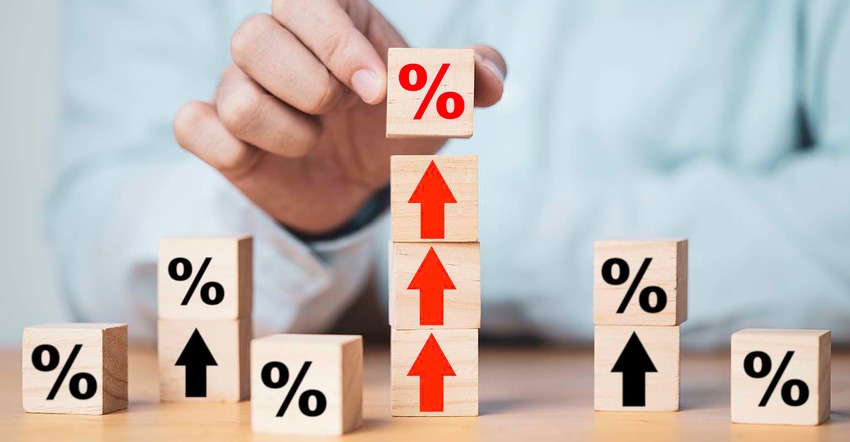
Farmer sentiment weakened again in October as the Purdue University-CME Group Ag Economy Barometer fell to a reading of 102, down 10 points compared to the September reading. Farmers were less optimistic about both current conditions on their farms as well their expectations for the future.
This month’s weakness in farmer sentiment pushes the index back near levels observed in late 2015 and early 2016 when farm income was significantly lower than the last two years. This year’s weakness in farmer sentiment is taking place despite very strong net farm income compared to the earlier period.
USDA estimates indicate that U.S. inflation adjusted net farm income averaged across 2021 and 2022 is more than 40% above the 2015-2016 average.
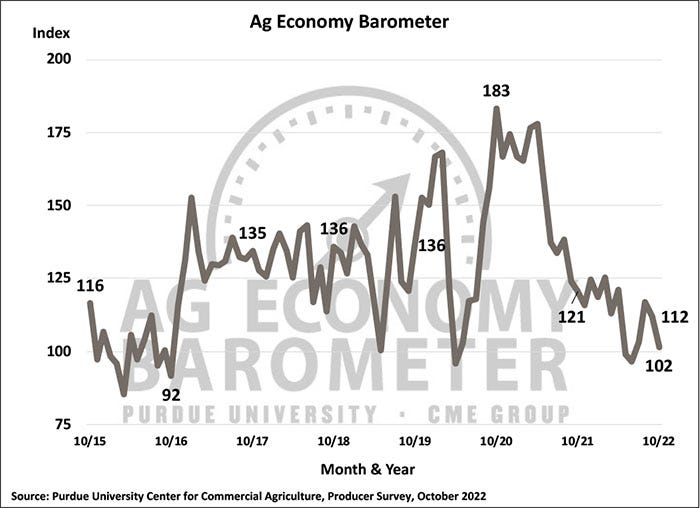
Financial outlook declines
Concerns about their farm’s financial performance was one of the drivers of weakening sentiment among producers. The Farm Financial Performance Index fell 13 points this month to 86.
This month’s weaker financial performance reading reflects farmers’ concerns about high input costs combined with weaker commodity prices.
Challenging shipping conditions throughout the Mississippi river valley have hampered exports recently and the corresponding widespread weakening of corn and soybean basis levels might be contributing to heightened concerns about financial performance.
Looking ahead to next year, over 40% of producers in the October survey view high input costs as their top concern, followed by rising interest rates.
Farm investments
After dipping to a new record low last month, the Farm Capital Investment Index improved this month to a reading of 38. The rise in the investment index was driven by a reduction in the percentage of producers who said now is a bad time to make large investments.
Despite the index’s modest rise in October, the investment index remains near its all-time low.
Once again, a follow-up question posed to producers who view this as a bad time for large investments revealed that increasing prices for farm machinery and new construction (40% of respondents) was the primary reason for the negative outlook.
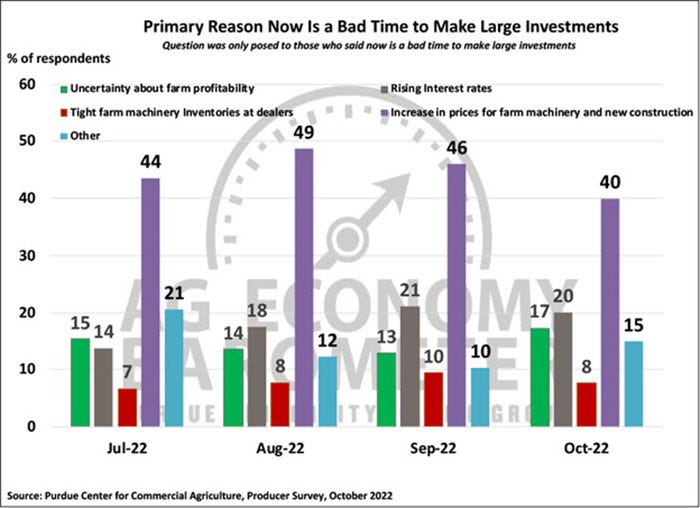
Farmland values
Both the short and long-term farmland value indices rose this month. Strength in both indices comes on the heels of reports from farmland auctions around the Corn Belt that land values are setting new record highs again this fall.
The short-term index rose in October primarily because more respondents said they expect values to rise over the next year. The shift in the long-term index was primarily the result of fewer producers saying they expect values to decline over the next year.
Out of respondents who said they expect values to rise over the next five years, fewer farmers chose non-farm investor demand as the primary reason they expect values to rise while more farmers chose inflation as a reason that they expect to see values rise.
Even with this month’s rise, both indices remain weaker than this time in 2021.
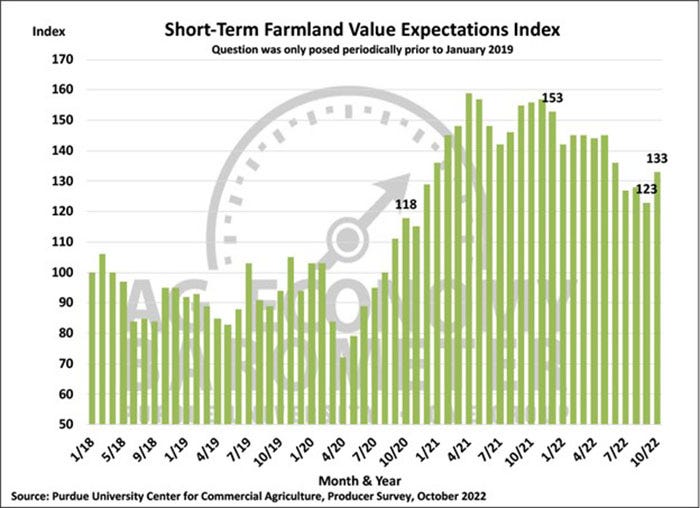
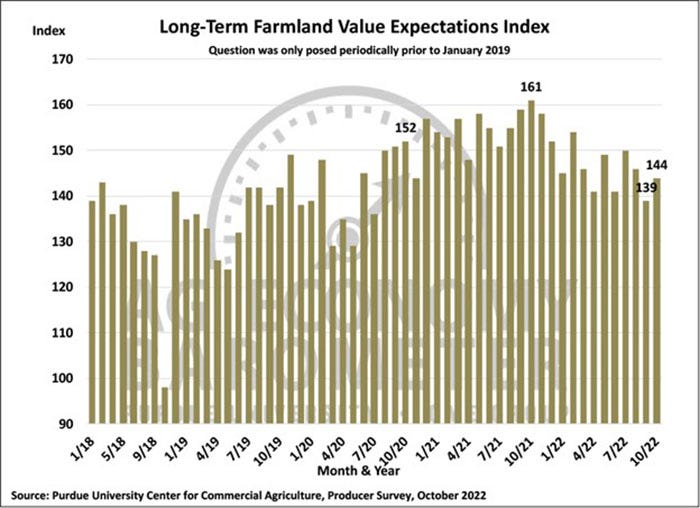
Policy priorities
Farm policy discussions are underway around the nation as Congress prepares for debate on a new Farm Bill in 2023.
Crop producers were asked which two policies or programs would be most important to their farm in the upcoming five years. The top choice was interest rate policy (36% of respondents) followed by crop insurance program (27% of respondents). Environmental policy was chosen by 16% of crop producers with conservation policy (11%) and climate policy (10%) in a near dead heat.
When asked how effective the current ARC-County and Price Loss Coverage programs are at providing a financial safety net, 72% of respondents rated the two programs as either “somewhat” (61%) or “very effective” (11%). When the same question was posed relative to crop insurance, 84% of respondents rated it as either “somewhat” (56%) or “very effective” (28%).

The Purdue University-CME Group Ag Economy Barometer sentiment index is calculated each month from 400 U.S. agricultural producers’ responses to a telephone survey. This month’s survey was conducted Oct. 10-14, 2022.
About the Author(s)
You May Also Like






